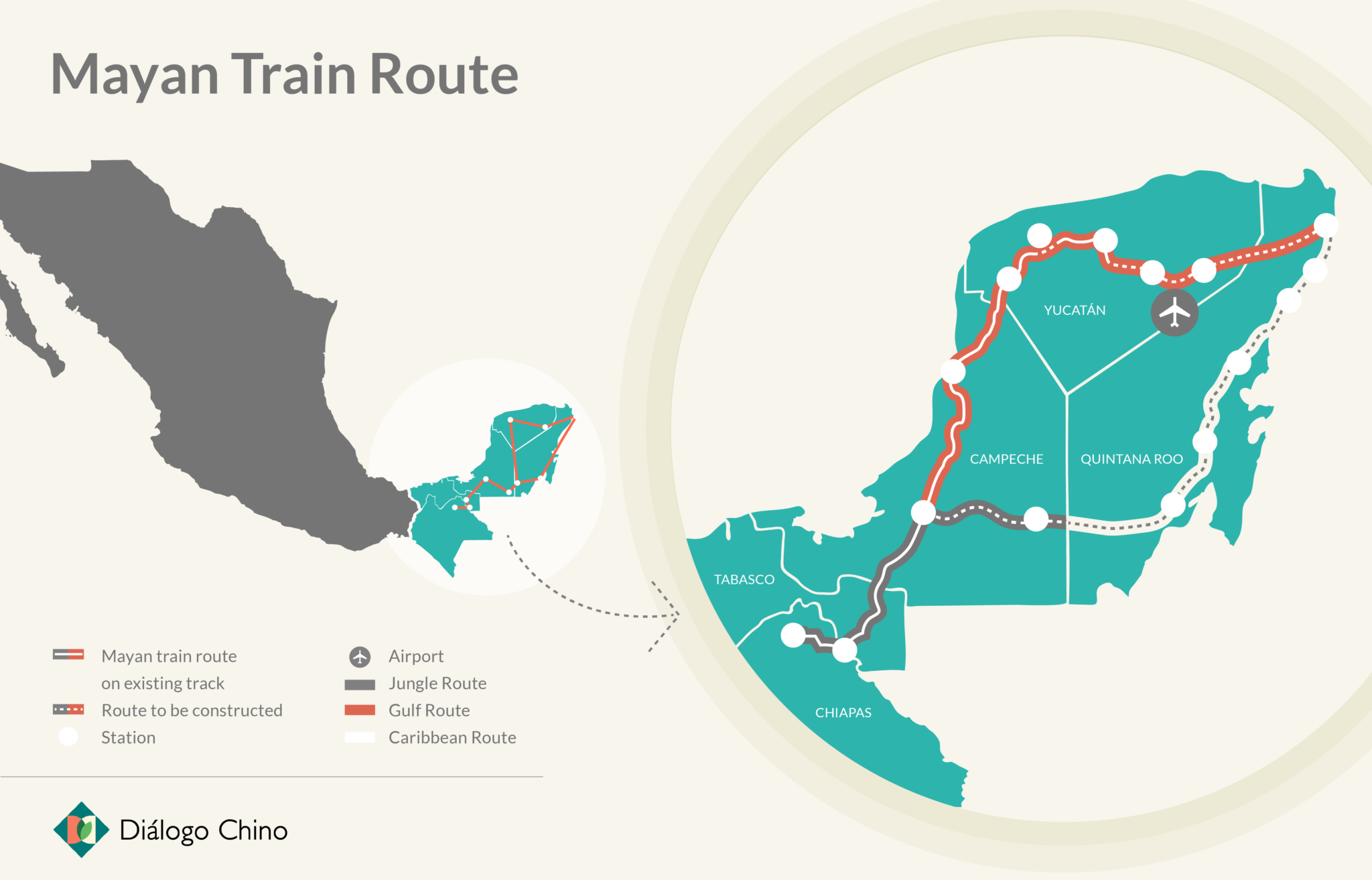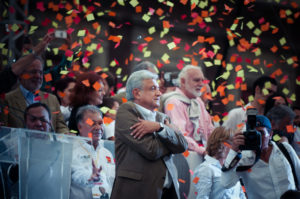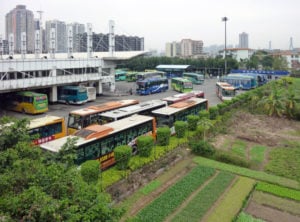Barely a month in office, the new Mexican government is promoting its flagship project: the Mayan Train (Tren Maya). The ambitious project aims to improve tourism infrastructure in the south of the country and will require US$8 billion in investment. It will stretch across 1,500 kilometres of track through the states of Yucatan, Campeche, Tabasco, Chiapas and Quintana Roo, according to the project’s official website.
The new government claims the train will trigger tourism development in the Yucatan Peninsula, the most visited area in Mexico. The first two sections: Palenque to Escárcega and Escárcega to Uxmal will be tendered between January and February.
It seems as though they are rushing. They want to start projects without complying with the legal framework
But while supporters of the railroad laud its benefits for one of the most economically underdeveloped areas of the country, critics have raised concerns about the project’s effects on unique biospheres.
Opposition
President Andrés Manuel López Obrador (known as AMLO) launched the Mayan Train in a traditional Mayan ceremony in December in which he asked the land for permission to proceed with the project but indigenous organisations have rejected it on the grounds it brings them few benefits.
Gustavo Alanís, director of the Mexican Centre for Environmental Law (CEMDA), told Diálogo Chino that appropriate steps must be taken before the project moves forward.
“Consultations with communities and indigenous peoples have to be held according to the ILO’s convention 169, which indicates there must be free, prior and informed consent,” he said. AMLO did conduct a national consultation on the project but did not include communities who speak Mayan and other indigenous languages.
According to Alanís, the Mayan Train must follow the necessary environmental impact procedure and obtain a favourable resolution. “It seems as though they are rushing. They want to start projects without complying with the legal framework,” he said.
Alanís added that the railway project must consider land use in forested areas and in different municipalities, since the line will pass through jurisdictions and cities which have their own development programmes.
According to the National Fund for Tourism Promotion (Fonatur), the technical and environmental impact studies will be ready by the end of 2019, with work beginning in 2020. Mayan Train maps indicate that the route will come into contact with 15 federal protected areas, 20 state protected areas, including the Calakmul Biosphere Reserve and regions rich in geological and hydrological resources.

“Obviously, we must consider endangered species or those at risk of extinction, both flora and fauna, as it is an area with great abundance,” said Alanís.
In 2018, the National Alliance for Jaguar Conservation conducted a nationwide census, finding that the species number around 4,000 across five regions in Mexico. Most are found in the Yucatan peninsula and would be affected by the railway.
4,000
Estimated number of jaguars across 5 regions in Mexico
Gerardo Ceballos, a researcher at the Mexican National Autonomous University’s Institute of Ecology and also a member of the Jaguar Alliance, told Diálogo Chino that the organisation had expressed reservations about the environmental impacts of the Mayan Train with Fonatur.
“It is very important that this work incorporates the environmental vision from the executive project [design plans and written reports concerning the train] so that these impacts can be mitigated,” said Ceballos, who added that they will collaborate with authorities for free to avoid damaging the local environment.
Fabiola Vite Torres, legal coordinator at the Zeferino Ladrillero Human Rights Center, said the Mayan Train development puts significant pressure on environmental rights defenders opposing the project.
On his first day in office, AMLO made 100 promises to the thousands gathered in Mexico City’s main square, the Zócalo. The 76th pledged that no economic, productive, commercial or tourism project would be allowed to impact the environment. Opponents say his signature project presents many challenges in a region of Mexico rich in natural resources, history and culture.
Chinese interest
Italian, Canadian and Chinese companies have shown great interest in the Mayan Train. China, in particular, has expressed a desire to participate and lend its extensive experience in constructing high-speed trains. The Chinese embassy in Mexico told news agency Notimex it had the technological knowhow and economic capacity to support the mega-project.
“Chinese investments in Mexico took on great importance in 2018 as a result of the bidding they won in maritime oil platforms in the Gulf of Mexico,” Eugenio Anguiano, Mexico’s first ever ambassador to China, told Diálogo Chino. These, plus other mining concessions, have created a pattern for China to participate in infrastructure, he added.
Under the current scheme, public investment is limited to 20% with the majority financed by private contributions. It is not yet clear whether foreign non-direct investment will be allowed.
The previous Mexican government had also pushed for a shiny new railway on taking office in 2012. “We also have the precedent of the failed Mexico City to Queretaro railroad,” Anguiano said.

In 2014, the government of Enrique Peña Nieto announced the award of a tender for a line linking the capital with the city of Queretaro 2014 to a consortium consisting of, among others, China Railway Construction Corporation (CRCC).
However, after an article by the Aristegui News website brought to light connections between the then president and the businessman who formed the winning consortium, the contract was suspended and a new call for applications made. CRCC’s contract was eventually cancelled.
Now, the Chinese government is demanding that Mexico pay US$600 million dollars in compensation. According to Anguiano, however, this won’t necessarily harm the prospects for other Chinese investments in the country. Mexico should seize the moment that otherwise warm relations offer, he added.
The direction of economic relations between Mexico’s new government and China are as yet unclear. According to Anguiano, AMLO is already implementing a series of erratic policies, such as the recent cancellation of the controversial Mexico City airport scheme.
This uncertainty comes at a time when Chinese embassies in the region have been instructed to ask their host governments to sign a memorandum of understanding in support of China’s Belt and Road infrastructure initiative (BRI). Both the current and previous Mexican administrations have refrained from signing it.





![Trucks queing up in Timure, three kilometres from Nepal Tibet border to get clearance from Nepal's security force [image by Nabin Baral]](https://dialogue.earth/content/uploads/2017/07/Nepal6-300x200.jpg)

![Arctic ice continues to melt, we must approach the challenge with some hope [image by: NASA/Kathryn Hansen]](https://dialogue.earth/content/uploads/2017/04/Arctic-ice-NASA-300x200.jpg)
